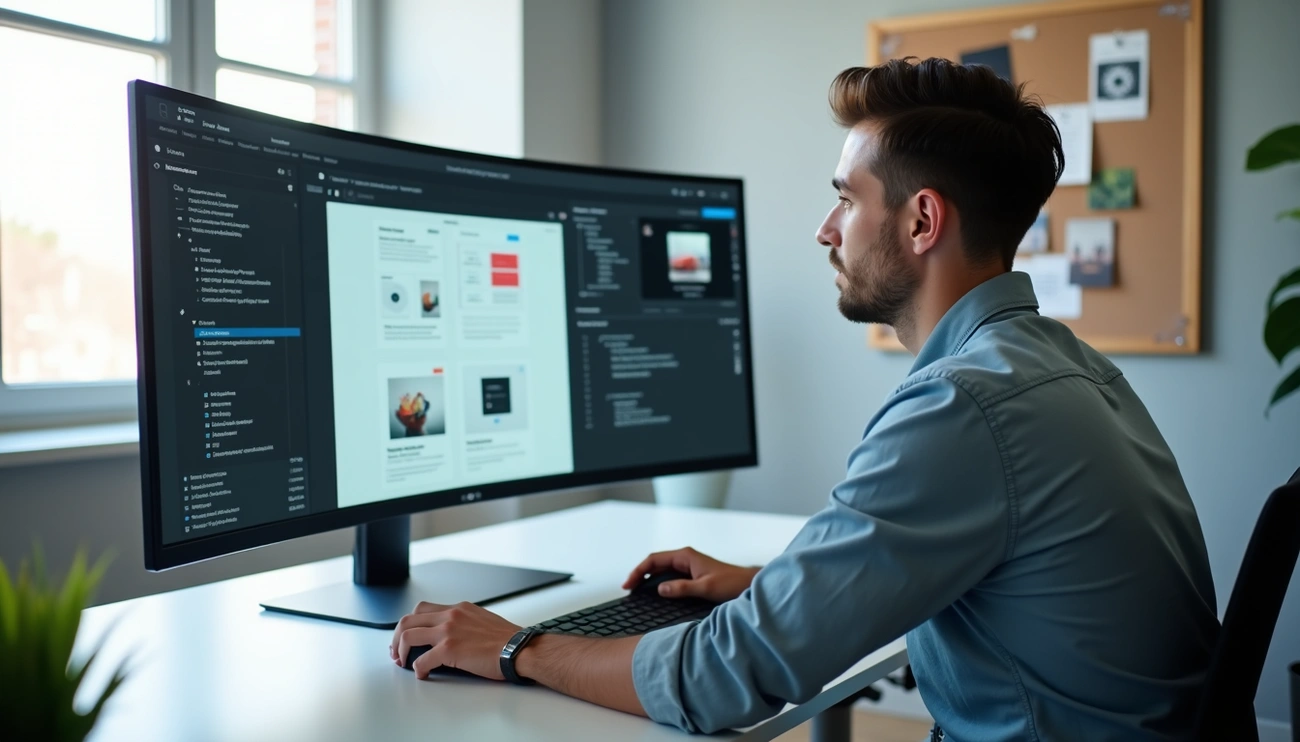Keeping Your Webflow Website Secure: Essential Tips

Greetings, fellow fans of Webflow! If you're anything like me, you've undoubtedly devoted numerous hours to creating the ideal website, fine-tuning each and every element until it appears flawless. However, in the rush to make our websites appear amazing, we sometimes overlook security, which is equally as crucial. Yes, protecting our Webflow websites from intrusive hackers and making sure our efforts are not in vain are essential. Now let's get started with some crucial advice for maintaining the security of your Webflow website.
Why Security Matters

Firstly, why should we even be concerned about security? Imagine, then, waking up one morning to discover your lovely website completely gone or, worse, vandalized. Not a very lovely image, is it? Cyberattacks pose a serious risk to everyone, including us inexperienced website owners. There are many risks, including malware attacks and data breaches. But don't worry, I'm here to help you maintain the security of your Webflow site and to help you navigate the confusing world of website security.
Use Strong Passwords and Two-Factor Authentication

Let's begin with the most fundamental: passwords. Even though you've heard it a million times, it still has to be emphasized. Your first line of protection for your Webflow account should be to use strong, one-of-a-kind passwords. Steer clear of passwords that are simple to figure out, like "password123" or "admin." Rather, use a combination of special characters, numbers, and letters.
Additionally, since we're discussing passwords, let's discuss two-factor authentication (2FA). Your account will be further secured if you enable 2FA. It will take a second form of authentication for someone to access your account, even if they manage to get their hands on your password. It's similar to having a nightclub bouncer at the entrance of your website.
Keep Your Software Updated
.png)
Although Webflow performs an excellent job of maintaining platform security, there is still work to be done. It's important to keep your plugins and applications updated. Make sure you have the most recent versions of all programs installed because hackers are constantly searching for weaknesses in out-of-date software. This covers any third-party integrations you may be using in addition to Webflow itself.
Regular Backups Are a Lifesaver
.png)
Consider the instantaneous loss of all the data on your website. It sounds scary. Regular backups are crucial because of this. Although Webflow provides automated backups, it's a good idea to periodically manually backup your website. In this manner, you may swiftly return your website to its previous splendor in the event of an emergency without having to lose all of your hard work.
Make use of HTTPS

Upgrade your website to HTTPS if you haven't already. This encrypts the data exchanged between your website and its visitors, making it much harder for hackers to intercept sensitive information. Since HTTPS is preferred by Google, it might also help your website's SEO. With Webflow, enabling HTTPS is simple and only requires a few clicks.
Secure Your Forms
.png)
It is imperative to safeguard forms as they are a common source of access for hackers. You can incorporate reCAPTCHA into your forms with Webflow to assist thwart automated assaults and spam. It's an easy step that will prevent a lot of hassles in the future.
Monitor Your Site
.png)
It's essential to monitor your website to spot any questionable behavior right away. Utilizing both Webflow's integrated analytics and external resources like Google Analytics, you may keep an eye out for any odd trends in your site's traffic or unexpected upsurges. Look into something right away if it seems strange.
Limit Access
.png)
Think carefully about who has access to what if you manage your site with a team or several individuals. You can assign team members varying degrees of authorization using Webflow, so you can ensure that only people you can trust have administrative access. The likelihood of a security breach decreases with the number of users having access.
Use Secure Hosting
.png)
Although Webflow offers secure hosting, be sure the external host you choose places a high priority on security. Seek out hosting companies that include features such as firewalls, SSL certificates, and frequent security updates. A secure website starts with a secure hosting environment.
Be Wary of Third-Party Integrations
.jpeg)
Although third-party connections can greatly increase the functionality of your website, there is a potential danger to security. Make sure you research any third-party tools before integrating them. Verify their reputation and security record to make sure they are trustworthy. Additionally, to prevent vulnerabilities, always keep them updated.
Educate Yourself
.png)
Finally, but just as importantly, learn about website security. You'll be more capable of safeguarding your website the more knowledge you have. There are many resources available online, including blogs, forums, and courses. Develop the habit of keeping abreast of the most recent security trends and best practices.
Let's Talk About Content Security Policies
Now, allow me to get a little technical, but bear with me; this is crucial. For your website, a Content Security Policy (CSP) functions as a security guard. It works to stop certain threats, such as Cross-Site Scripting (XSS), by dictating which material is permitted to load on your website. Your website can be configured to load scripts, styles, and other materials only from reliable sources.
Setting up a CSP in Webflow isn't too complicated. You can add custom code in the header of your site to define your policy. It might look something like this:

This is just an example, and your policy will depend on what resources your site needs to load. The key is to be as restrictive as possible while allowing your site to function properly.
Keep an Eye on Permissions

It's tempting to leave permissions incredibly open while developing a website in an attempt to ensure everything functions as intended. There may be a security risk, though. Any scripts or plugins you add to your website should have their rights reviewed and restricted. Give them only the authorizations they require in order to operate.
Consider a Web Application Firewall (WAF)

An extra degree of protection can be added by using a Web Application Firewall (WAF), which filters out dangerous traffic before it reaches your website. Certain WAFs are specifically made to function with Webflow-like platforms. They can aid in defending against frequent assaults such as XSS and SQL injection, among others. Examine solutions such as Cloudflare, which provides a strong WAF and works nicely with Webflow.
Regular Security Audits
.png)
Regular security audits are necessary for your website, just as you would take your automobile in for routine maintenance. This entails carefully combing over your website to find and address any potential weaknesses. Either you or a professional can handle this for you. You can keep your site safe and ahead of any dangers by conducting regular audits.
Be Prepared for the Worst
.png)
Despite taking all the necessary safety measures, errors can still happen. For this reason, having a plan in place for handling a security breach is crucial. This entails being aware of who to call for assistance, how to restore your website from a backup, and how to notify users in the event that their data is hacked.
Conclusion: Stay Vigilant and Proactive
.jpg)
Maintaining the security of your Webflow website is a continuous effort. You can't just set it and forget about it. But you may lower the likelihood of a security breach considerably by paying attention to these pointers and being watchful. Recall that a strong attack makes for the finest defense. Use strong passwords, be proactive, keep your software updated, and teach your staff and yourself security best practices.
So that we may continue to develop, innovate, and inspire without having to worry about those annoying hackers, let's maintain our lovely Webflow websites safe and secure. Have fun creating and be careful out there!
Whoa, that was a ton of data! However, I hope it was useful to you. Although it may not be the most attractive aspect of web design, security is unquestionably one of the most crucial. Please get in touch if you need help or if you have any questions. After all, we're all in this together. Until we speak again, be careful and keep creating incredible websites!


Turn Your Vision into a Scalable Digital Experience
From brand to backend, we create systems and experiences that actually move the needle.



